
An Educator’s Guide to Combat Bullying & Bully Prevention
I despise and want the world to discontinue the saying, "Sticks and stones will break your bones, but words will never hurt you!"
Come to find out, words really do hurt you! In some cases, a student may wish it was only a stick or stone thrown at them, rather than repeated bully behavior. At least the stick or stone may have an ending to the situation! Some bully behaviors continue over years. Obliviously, neither is acceptable behavior by students, but it makes the point after having students in my office saying they would rather have a stick or stone thrown at them then "words!" We need to teach students the different types of bully behavior so they can identify it and communicate with adults to get it stopped.
As an educator, you may have avoided the recent NetFlix show based on Jay Asher's book, 13 Reasons Why. It has had mixed reviews in the education community. The movie follows a high school boy, Clay, who navigates a series of cassette tapes in which Hannah details and lists 13 specific reasons why she commits suicide. The goal of the book and TV show is to bring light to the rampant suicide rates in the United States, as well as the bullying that can persist in student's lives. Asher speaks to the fact that no one wants to talk about the specific reasons why someone commits suicide. Much like the movie characters, the 13 people Hannah lists in her reasons want to remain anonymous and do not want to own their part in her suicide. Bullying behavior is evident in many of her listed reasons why.
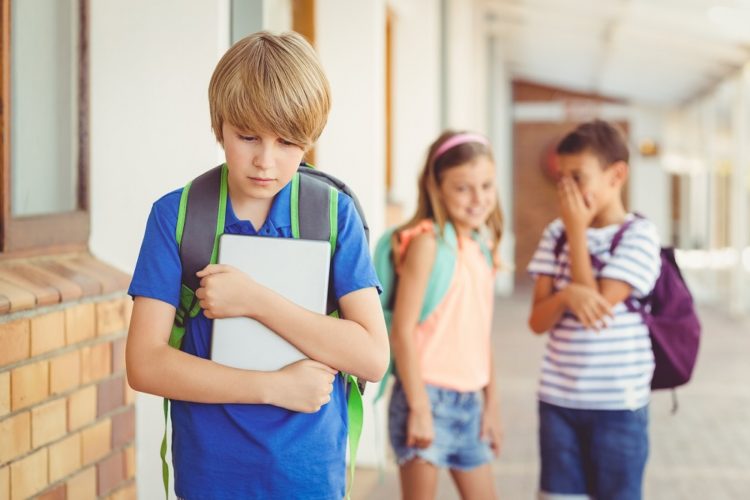
Very powerful for me as an educator and principal. I believe the show has glamorized suicide and I believe the show attributed to further suicides. Do I believe this is a TV show that students should watch, "NO!"
I do believe educators should watch it, even if they hate it, to understand the dynamics of bullying and suicide. Made for TV drama may not play out exactly like reality, but after having teenage sons and being around elementary, middle, and high school students my whole career, I do believe there a multitude of take-a-ways from this show.
We will not delve into this TV show much further, but we will "go to solution" and offer over 151 practices and understandings that principals and educators can use immediately. If you only use this as a checklist to celebrate what you are already doing, then good work…you are hopefully on the right track to stopping bullying behavior in your school, district, and community! If you find yourself not finding many of the practices in your school, we suggest you start small by taking on one or two to gain momentum.
 One easy strategy to you can use immediately is a school-wide read. In my school, all students and teachers read the book, Wonder, by R.J. Palacio. The main character, Auggie Pullman, is born with a "facial difference." He is bullied by many students when he attends public school. This is a great book about overcoming obstacles and choosing kindness! Students can truly feel empathy, experience tolerance, and take action with kindness. Over 5 million people have purchased this New York Times Bestseller according to Amazon.com (7/5/17).
One easy strategy to you can use immediately is a school-wide read. In my school, all students and teachers read the book, Wonder, by R.J. Palacio. The main character, Auggie Pullman, is born with a "facial difference." He is bullied by many students when he attends public school. This is a great book about overcoming obstacles and choosing kindness! Students can truly feel empathy, experience tolerance, and take action with kindness. Over 5 million people have purchased this New York Times Bestseller according to Amazon.com (7/5/17).
RELATED - 20 of the Best Anti-Bullying Picture Books for Teachers
If we truly break down all bully behaviors, they fall into three main categories: verbal, physical, and psychological. I propose a fourth category that is just as powerful and deceitful as the first three: cyber or social media bullying. Though cyber bullying is a combination of the first three, I believe it needs its own designation. We will delve into each component, and give several practices and understandings that can support stopping bullying behavior in your schools.
We start first with a basic understanding of "bullying." Dan Olweus, from the popular Olweus Bully Prevention Program, defines bullying as the following,
"A person is bullied when he or she is exposed, repeatedly and over time, to negative actions on the part of one or more other persons, and he or she has difficulty defending himself or herself."
The school staff must agree and continue to talk about what truly are the bullying incidents in their school. Bullying often times gets confused with rough tumble play, fights, and arguments. We must make it more concrete for everyone. It is a behavior from one student to another that is hurtful in nature, repeated, and there is an imbalance in power between the students involved.

PLEASE NOTE: "PU" stands for "Practice & Understanding".
UNDERSTANDING BULLYING
- 3 Types of Bullying in School + 1 Immense Social Challenge (PU #1-4)
- 5 Reasons Why Schools Have a Difficult Time Stopping Bully Behaviors (PU #5-9)
- 5 Reasons Why We Need to Define Bully Behavior and Stop Generalizing Events as "Bullying" (PU #10-14)
6 COMPONENTS TO COMBATING BULLYING IN YOUR SCHOOL
As of last year, all states have a state law to stop bullying. Many of these laws now require school districts to have a program. Simply purchasing a bully prevention program will not stop bullying. Many parents, community members, educators, and even legislators see many of these issues as black and white…punish the bully!
As a current administrator, I have to tell you, it almost never that easy as getting a report on bullying, and immediately handing out consequences. In fact, over a decade of being an administrator, I would estimate 90%+ of the incidents I investigate, I have found there is always a lot more to each story. The answer is not as simple as legislating a bully law and implementing a bully prevention program. I found that most bully prevention programs have these components in common:
- Instructional Lessons
- Parent and Community Components
- Professional Development for Staff Members
- Resources and Materials
- Protocols and Procedures to Report and Stop Bullying
These are necessary components to a strong bully prevention program, but I argue that none of these prevention programs is casting a large enough net in order to combat bullying. If schools really want to take this on and minimize bully behavior they must take on what I feel are the Power Six Components listed below. One component is just as important as the other five. Of course each of these six need to be tailored to each individual school district; there may be some components that need more attention in a specific school district. These six components are not all inclusive, but they are a good start in combating bullying if implemented with fidelity.
Each component has a series of questions that will guide our practices and understandings.
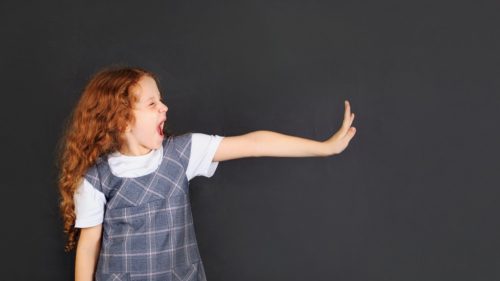
COMPONENT 1: BULLY PREVENTION PROGRAM
Various questions posed within this segment include within the below articles:
- What program matches your school's goals and vision?
- How will it be implemented? What steps will be taken to ensure it is implemented with fidelity?
- Is there an effective reporting system set for students whom are bullied or witnesses to it?
- Who does the program empower? Bystanders? Students who are bullied? Staff?
- Is there a common language that adults in the school can use, as well as teaching the verbiage to students, parents, and community members?
- Are there mini lessons that can be taught, discussed, modeled, and used across all grade levels, as well as grade level specific?
- Do students and parents trust staff members to report?
- Does the program offer ongoing staff development?
- Do student lessons extend to home?
- Are the lessons researched based?
- 6+ Steps to Addressing Bullying When It Occurs (PU #15-21)
- 9 Strategies We Can Teach Students to Problem Solve (PU #22-30)
- 7 Strategies to Raise a Defender (PU #31-37)
- Provocative Victims and 7+ Practices for Victory (PU #38-44)
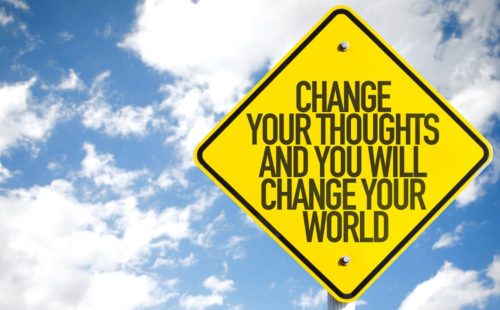
COMPONENT 2: POSITIVE BEHAVIOR INTERVENTION SYSTEM (PBIS) WITH STRONG SOCIAL SKILLS
Various questions posed within this segment include within the below articles:
- How does your school recognize positive behaviors in your school?
- Do you use a program or have you developed your own program?
- How do students recognize each other for positive behavior?
- What types of celebrations occur for students, staff, and administration?
- What socio and emotional characteristics does your program address?

COMPONENT 3: PARENT & COMMUNITY INVOLVEMENT
Various questions posed within this segment include within the below articles:
- How are parents involved in your school?
- How is the community involved in your school?
- How can you go from parents and community participating to full engagement? What is the difference?
- How do you communicate bully prevention with your families and community?
- 13 Ideas to Combat Bullying at the Community Level (PU #53-65)
- 6 of the Most Hideous Cyber Bullying Tactics Used By Students (PU #66-72)

COMPONENT 4: STRONG EFFECTIVE COMMUNICATION
Various questions posed within this segment include within the below articles:
- How do you communicate with staff, students, parents, and community?
- What do you communicate about bully prevention?
- What do you communicate news, data, and bully prevention information about your school?
- Do you have a strong social media presence? Do you use it to promote positive behaviors?
- 11 Communication Strategies to Combat Bullying (PU #73-83)
- 20 Ideas To Successfully Use Bully Data (PU #84-103)

COMPONENT 5: STRONG INSTRUCTION BASED ON STUDENT ENGAGEMENT
Various questions posed within this segment include within the below articles:
- How effective are your teachers? What evidence do you have?
- Are bully prevention lessons tracked and are the effectively taught?
- How does effective and engaged instruction play a part in the implementation of a bully prevention program? Do you believe they are connected?
- Do your teachers believe in a culture of learning where student engagement and relationship building are the main priorities in effective instruction?
- Do teachers have strategies for engagement with students who have experienced trauma and anxiety (trauma-informed classrooms)?
- Are teachers trained in the latest research-based instructional strategies? Do they use these strategies when teaching bully prevention lessons?
- 5 Reasons Why Strong Instruction Affects Bully Prevention (PU #104-108)
- #1 Instructional Lesson for All Students on Bully Prevention (PU #109-112)
- Power of Buddy Classrooms: 19 Ideas (PU #113)
- 8 Ways to Teach Empathy (PU #114-121)
- 10 Ways to Empower Defenders (PU #122-131)
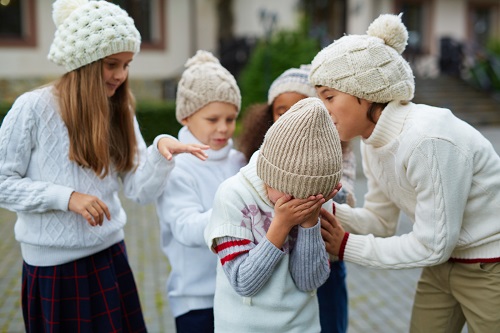
COMPONENT 6: POSITIVE STRONG SCHOOL CULTURE
Various questions posed within this segment include within the below articles:
- How do staff members treat all students at school?
- How do staff members treat each other at school?
- How do staff members treat parents and community members?
- How do parents treat staff?
- How do community members treat staff?
- Do you have a way of collecting data, survey data, to make changes?
- What do your parents and community members say about your school?
- Do students report bullying to staff members?
- Do students, staff, and parents feel safe at school?
- Do students and staff have opportunities to give back with community service problems?
- 9 Reasons Culture Trumps Strategy (PU #132-140)
- 10 Strategies to Build Strong Relationships (PU #141-150)
- One School Wide Strategy: Kindness Campaign (PU #151)
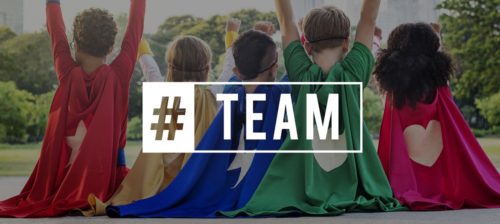
BULLY PREVENTION VOCABULARY
Perception seems to be the number one determining factor in why schools cannot extinguish bully behaviors. Communities, parents, and school staff would all like bully behaviors to stop in and out of school. Unfortunately, trying to monitor, control, and correct all the behaviors associated with bullying is near impossible. Educating the community, including the school staff, becomes the primary priority.
Changing a perception starts with education. We believe perceptions can change by teaching, modeling, and supporting students and adults with the ideals of kindness, tolerance, and empathy. Starting with some basic definitions so everyone is on the same playing field is a sensible place to start.
Unfortunately, if you pick up a bully prevention manual or book from the early 1990's, you will find terminology that no longer is used, words that change meaning, or the emphasis is on new wording. For example, the word "anxiety" over the past 20 years has changed emphasis. The latest brain research discusses how "anxiety" in an educational sense must redefined…we must continually "reset the bar."
Here is a list of 37 definitions most used by current bully prevention sites, books, and educational philosophies. We start with definitions of vocabulary that will make this guide easier to read and understand. Use this with your school staff, parents, and community members. We give the word and then a definition from a Bully Prevention perspective.
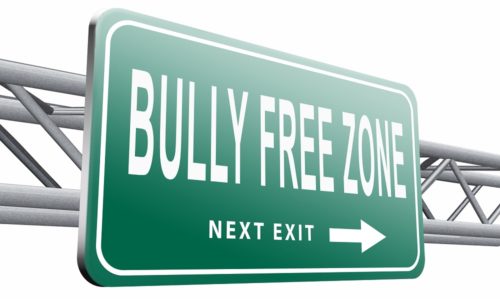
Argument - A disagreement between two students; it can be repetitive; there is no imbalance of power between the two students;
Behavior Intervention Plan (BIP) - A BIP is a formal plan for a student who exhibits behaviors that need to be modified, changed, or eliminated; can be used for a student is an identified bully; contains positive and negative consequences and/or rewards; a BIP is usually built from a behavior analysis conducted by a school psychologist
Buddy Classes - A school-wide strategy that connects students from different grade levels; building relationships is the primary goal of buddy classes; buddy classes are usually more than two grade levels apart (ie…6th and 1st graders, 5th and kindergartners)
Bully Prevention Program - A program that promotes pro-social behavior and combats bully behaviors.
Bully Prevention Team - A team of individuals that supports students and teachers; team members can support individual students or teachers, grade levels, or school-wide with ideas, strategies, practices, and understandings
Bully Reporting System - A system developed in a school setting to report, teach, and eliminate bully behaviors; a school goal is for every student to be able to report to one trusted individual, if not, a parent at home can be part of the reporting system
Bullying - A person is bullied when he or she is exposed, repeatedly and over time, to negative actions on the part of one or more other persons, and he or she has difficulty defending himself or herself (Dan Olweus Definition)
By-Stander - A person who is watching or next to a bully situation; they have a choice to support the student being bullied or not; the school goal is to empower the bystanders; bystanders can take action by stopping the bully behavior by addressing it on the spot or reporting it to an adult
Catfishing - A form cyber bullying where a fake account or fake persona is created to trick or dupe another student into liking them and believing the bullies' story (made popular by the MTV show, Catfish)
Cyber or Social Media Bullying - A form of bully behavior that is conducted electronically through the internet; the number of ways bully behavior is used is exponential as social media expands; Social Media bullying occurs when the behavior is repeated over time, there is an imbalance of power between the students involved, and it affects the learning environment of school; school officials can take action if the bully behavior affects the learning environment according to court cases in the United States
Defender - A student or group of students that defend a student who is being bullied; a defender can address the bully behavior on the spot or report it to an adult
Empathy - The ability to understand the emotions and actions of someone else through reflection; It is intangible concept that we must make visible for our students; it is the ability to put ourselves in other people's situations; the single-most defining characteristic as a human being is our ability to teach our children the ability to see situations and people from other's perspectives; allows us to be an ally with another person; in contrast with sympathy (see sympathy)
Go To Solution - When problem solving it is the ability to work on a solution rather spending an exorbitant amount of time on the problems themselves; using the terms "let's go to solution" means we understand the problems, now what can we do to solve them
Growth Mind Set - Having a Growth Mindset, and not a Fixed Mindset, means we believe that a person's basic abilities can be developed through hard work; growth mindset also encourages people to believe that a love of learning and sense of resilience is essential for success
High Trust Philosophy - A philosophy developed by Denny McLaughlin; the High Trust Models Combine a profound respect for the tradition of teaching/leadership with his own creation of Trust Psychology and experiences in education/leadership. The result is an exquisite perception, philosophy and practice of human interaction: a science based, performing art. Trust Psychology® is a new model of inquiry into the understanding of human thinking, development, motivation and fulfillment. Trust Psychology explains the process to personal intimacy and creativity. The core is unconditional love: the giving and receiving of love just because one is alive. It is through unconditional love and trust that one can be influenced, and influence others, without resistance, to think and be responsible (from www.hightrust.net)
Kindness - The ability to treat others with respect, being generous, and friendly; the goal is to have students complete random acts of kindness to others in the school environment without asking
Kindness Campaign - A program that is developed by school staff to increase the number of acts of kindness; the goal is for students to complete random acts of kindness in the school environment without asking; making acts of kindness visible can be contagious
Multi-Cultural Education - Teaching students about their histories, values, beliefs, and perspectives of people from different cultural backgrounds
Outing Someone - When a student's private information is made public; this can be done verbally or on social media; this is form of bullying
Peaceful Playground -- A program implemented to support students playing peacefully on the playground; it teaches students how to play games, how to invite others to play, and how to use their words when they are frustrated; Peaceful Playground promotes choice in several games; teaches specific rules for these games, and adults work with students on positive social interactions on the playground; teaching empathy while learning and playing these games is vital to the implementation success.
Positive Behavior Intervention and Support (PBIS) - It is a proactive approach to establishing the behavioral supports and social culture as needed for all students in a school to achieve social, emotional and academic success; spending more time on desired behaviors rather than targeted behaviors is primary goal of using PBIS in school
Provocative Victim -- A "provocative victim" is a student who is bullied by others and the victim themselves exhibit undesired behaviors such as poor social skills, unable to read social cues, appears restless, irritable, immature, unfocused, awkward, impulsive, temperamental; the victim may have little tolerance for obstacles or delays, have a difficult time understanding and conforming to rules, fights back against bullies, prolongs the conflict even when they are losing, and usually loses conflict (Bullying Prevention Resource Guide from Baltimore City Schools)
Psychological Bullying - For bullying behavior to be classified as psychological bullying, it is not seen or heard, but can be evident with more research and observation. Like the other two forms of bullying behavior, it needs to be repeated over time, and there is an imbalance of power between the students involved in the situation; some examples: purposely being left out of social situations, telling other students to not be around a specific student or group of students, encouraging non-communication In the presence of a student of group of students, manipulating friendships, spreading rumors, but never talking directly to other student, perpetrating situations that can be humiliating to a student without prior awareness (Examples: making books fall out of locker in crowded hallway, pranks, orchestrating "catfishing," and more; neither done directly through verbal or physical bullying to the student), and combination of verbal and physical Bullying
Reporting - A bystander, defender, or person being bullied tells any school employee on campus; the process of getting bullying stopped starts with an effective reporting system that everyone knows, understands, and uses; we report to keep ourselves or someone else safe; in contrast to tattling where we are reporting to get someone in trouble
Responsibility - The ability to follow through with tasks, assignments, and other requests that illustrates trust and completion of task; teaching responsibility starts in the classroom and can be supported at home; a school goal of students to act independent and make decisions without being asked to do so
Restorative Practices -- A school practice that puts more effort into fixing relationships than handing out punitive punishments; we find the motivation for the behavior; create a plan to fix the relationships, and decide on how we will handle ourselves the next time we encounter a similar situation in the future
Rough and Tumble Play - Though there might have been aggressive behavior towards another student, the situation may not be intentional to hurt someone, nor done repeatedly; we can teach the hurt student, and the student who felt it was a bullying incident, that this is not bullying, but it is rough and tumble play.
School Culture - The beliefs, perceptions, relationships, attitudes, and written and unwritten rules that shape and influence every aspect of how a school functions; it is also the physical and emotional safety of students, the orderliness of classrooms and public spaces, or the degree to which a school embraces and celebrates racial, ethnic, linguistic, or cultural diversity (from http://edglossary.org/school-culture/)
Service Work - Students complete work for a cause; students first decide on a cause that is worthy to support, they then set goals on how they will support the cause, next they develop a time line of tasks to complete their goals; they advertise and complete the tasks, lastly they celebrate the outcome and communicate with the student body and the people behind the cause
Socio/Emotional Learning Program -- Social and emotional learning (SEL) is the process through which children and adults acquire and effectively apply the knowledge, attitudes, and skills necessary to understand and manage emotions, set and achieve positive goals, feel and show empathy for others, establish and maintain positive relationships, and make responsible decisions (from http://www.casel.org/what-is-sel/)
Sympathy - How we feel sorry, pity, or sorrow for someone else; in contrast to empathy that allows us to be an ally with another person
Tattling - Reporting to an adult to get another student in trouble; in contrast with "reporting" to keep someone safe
Tolerance - It is respect, acceptance and appreciation of the rich diversity of our world's cultures, our forms of expression and ways of being human. Tolerance is harmony in difference. We view tolerance as a way of thinking and feeling - but most importantly, of acting - that gives us peace in our individuality, respect for those unlike us, the wisdom to discern humane values and the courage to act upon them (From Teaching Tolerance)
Track Bullying Data - The multitude of ways to collect data on bullying incidents in a school setting; the ability to collect useful data to set goals, implement changes, and celebrate success; some examples is collecting bullying incidents at each grade level, time of day, location, and by which individuals
Tracking Positives - School staff can make tracking positives visible for everyone to see; by making tracking visible students can set goals and celebrate successes
Trust - It is the belief in the reliability and follow through of an individual, truth they tell, and the strength they have through adversity. The trust factor is key to communication. Parents need to feel comfortable and safe addressing bully behaviors with the school. Building trust takes time. If a parent believes that addressing the issue with the classroom teacher or principal is not effective, then the bully behaviors may continue.
Verbal Bullying - For bullying behavior to be classified as verbal bullying, it must be heard, repeated over time, and there is an imbalance of power between the students involved in the situation. Here are some examples of verbal bullying: teasing, taunting, put-downs, name-calling, threats, sexual harassment or comments, spreading or starting rumors, or a combination of Verbal and Psychological Bullying or "Mental Games".
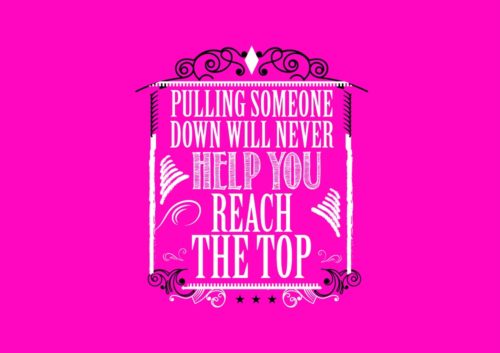
LIST OF ALL 151 PRACTICES & UNDERSTANDINGS
PU#1 - Verbal Bullying Behavior
PU#2 - Physical Bullying Behavior
PU#3 - Psychological Bullying Behavior
PU#4 - Cyber or Social Media Bullying
PU#5 - Bullying vs. Argument: Differences!
PU#6 - Provocative Victims
PU#7 - Bullying vs. Rough and Tumble Play
PU#8 - Over Usage of "Bullying" Terminology
PU#9 - Lack of Parental Knowledge on Bullying
PU#10 - Dig Deeper: Then Keep Digging
PU#11 - Be Proactive
PU#12 - Make Bully Prevention a School-wide Focus
PU#13 - Avoid the Negative Media Cycle
PU#14 - Effective and Efficient Bully Reporting System
PU#15 - Meet 1:1 First
PU#16 - Collect More Investigation Information, Repeat…
PU#17 - Talk It Through With a Team and Develop a Plan
PU#18 - Address the Bully Behavior
PU#19 - Implement Plan for Future
PU#20 - Follow Up
PU#21 - Police Action Warranted
PU#22 - Student Strategy: Tell Them To Stop
PU#23 - Student Strategy: Go To Another Activity
PU#24 - Student Strategy: Rock, Paper, Scissors, Go!
PU#25 - Student Strategy: Use "I messages…"
PU#26 - Student Strategy: Apologize
PU#27 - Student Strategy: Talk It Out
PU#28 - Student Strategy: Ignore It
PU#29 - Student Strategy: Wait and Cool Off
PU#30 - Student Strategy: Walk Away and Let It Go.
PU#31 - Teaching Students Giving!
PU#32 - Teaching Students Service Work!
PU#33 - Teaching Students Responsibility!
PU#34 - Teaching Students with Real World Examples!
PU#35 - Teaching Students Kindness!
PU#36 - Teaching Students Tolerance!
PU#37 - Teaching Students Empathy!
PU#38 - Educator Strategy: Build Trusting Relationships
PU#39 - Educator Strategy: Be Honest and Professional
PU#40 - Educator Strategy: Do Your Research
PU#41 - Educator Strategy: Develop a Plan For All Students Involved
PU#42 - Educatory Strategy: Model Language and Actions
PU#43 - Educator Strategy: Team with Other Professionals
PU#44 - Educator Strategy: Develop a Reporting System
PU#45 - Emphasis on Culture over Enforcement of Stricter Policies
PU#46 - Accentuate the Positives
PU#47 - Put Your Time Where You want the Focus
PU#48 - Tracking Positive Data
PU#49 - Setting Goals Based on Positive Interventions
PU#50 - Celebrating Students and Staff
PU#51 - Students Recognizing Other Students
PU#52 - School-Wide Philosophy
PU#53 - School-Community Kickoff
PU#54 - School-Community Partnership Campaign
PU#55 - Student Service Projects
PU#56 - School-Community Projects
PU#57 - Community Discussions
PU#58 - Multi-Organizational Meetings
PU#59 - School-Community Presentations
PU#60 - School-Community Bully Prevention Teams
PU#61 - Community/Business Sponsorship Programs
PU#62 - Community Survey and Data Shares
PU#63 - Celebrate Success with Community-Wide Recognition
PU#64 - Social Media Celebrations and Pushing Out Information
PU#65 - School-Community Bully Prevention Guide Sheets
PU#66 - "Outing Someone"
PU#67 - Teasing, Taunting, and Name Calling
PU#68 - "Catfishing" and Creating Fake Accounts
PU#69 - Inappropriate Pictures and Comments or Inappropriate Sexting
PU#70 - Forwarding Hurtful Information
PU#71 - Threats, Intimidation, Harassment
PU#72 - Drop the Phone!
PU#73 - Communication Strategy: School Staff to Students
PU#74 - Communication Strategy: School Staff to Parents
PU#75 - Communication Strategy: School Staff to Community
PU#76 - Communication Strategy: School Staff to School Staff
PU#77 - Communication Strategy: Students to School Staff
PU#78 - Communication Strategy: Students to Parents
PU#79 - Communication Strategy: Students to Community
PU#80 - Communication Strategy: Parents to Students
PU#81 - Parents to School Staff
PU#82 - Parents to Community
PU#83 - Community to School Staff
PU#84 - Track Data: Bully Incidents Per Day, Week, Month, Year
PU#85 - Track Data: Bully Incidents by Location
PU#86 - Track Data: Bully Incidents by Time of Day
PU#87 - Track Data: Bully Incidents by Grade Level
PU#88 - Track Data: Bully Incidents by Gender
PU#89 - Track Data: Bully Incidents by Staff Member
PU#90 - Track Data: Top 5 Offenders List
PU#91 - Track Data: Bully Incidents by Sub Group
PU#92 - Track Data: Driving Monthly Themes for Socio/Emotional Program
PU#93 - Tracking Data: Data Driving Classroom Instruction
PU#94 - Track Data: Data Driving Counselor Programs
PU#95 - Track Data: Data Driving Professional Development
PU#96 - Track Data: Data Driving Purchased Resources
PU#97 - Track Data: Data Driving Outside Services Connected to School
PU#98 - Track Data: Data Driving Parent and Community Forums
PU#99 - Track Data: Collect Data to Celebrate Progress or Focus the School
PU#100 - Track Data: Collect Data Year to Year to Compare Students, Grade Levels, and More
PU#101 - Track Data: Bully Incident by Type of Incident
PU#102 - Track Data: Bully Incidents by Intensity and Severity
PU#103 - Track Data: Data Driving School-Wide Procedures & Universals
PU#104 - Teach Strong Content and Relatable Examples
PU#105 - Use Engagement, Active Participation, Instructional Strategies, and Opportunities to Create Strong Relationships
PU#106 - Build Strong Lesson Design
PU#107 - Students Putting Bully Prevention Practices into Action
PU#108 - Creative and Effective Assessment and Evaluations
PU#109 - Teacher Strategy: Teach with Strong Content
PU#110 - Teacher Strategy: Engage the Learners
PU#111 - Teacher Strategy: Encourage Discussion
PU#112 - Teacher Strategy: Teach How the content will be used in the Future
PU#113 - Use Buddy Classes
PU#114 - Socio-Emotional Learning Programs
PU#115 - Peaceful Playground or Play Programs
PU#116 - Multi-Cultural Education
PU#117 - Kindness Recognition Program
PU#118 - Global Learning
PU#119 - Service Projects
PU#120 - Restorative Practices
PU#121 - An Empty Chair Program
PU#122 - Teach What a Defender is…
PU#123 - Teach Why We Need Defenders?
PU#124 - Teach Tattling vs. Reporting
PU#125 - Teach Reporting to a Trusted Adult
PU#126 - Teach Scenario-Based Classroom Instruction
PU#127 - Use Public Recognition & PA Announcements on Defender Situations
PU#128 - Earn a Defender License
PU#129 - Emphasize PBIS for All Students
PU#130 - Use Student Led Assemblies
PU#131 - Use Student Created Videos and Service Announcements
PU#132 - The Top 1% of Highest Preforming Schools: Culture in Common
PU#133 - How Does the Administrator Treat Staff
PU#134 - How Do Staff Treat Other Staff
PU#135 - How Does the Staff Treat the Community
PU#136 - How Does Staff Treat Families
PU#137 - How Does the Staff treat Students
PU#138 - Relationship Building: Comes Down to Trust
PU#139 - Make Sure to have Fun
PU#140 - Positive Learning Environment
PU#141 - Greet Your Students
PU#142 - Do What You Say You Will Do: Follow Through
PU#143 - Be Consistent
PU#144 - Be Positive
PU#145 - Smile, Laugh, and Actually Speak to Them
PU#146 - Listen to Them
PU#147 - Be Available
PU#148 - Be Honest
PU#149 - Involve Your Students in the Day to Day Operations in Your Classrooms
PU#150 - Hold Them Accountable
PU#151 - Kindness Campaign
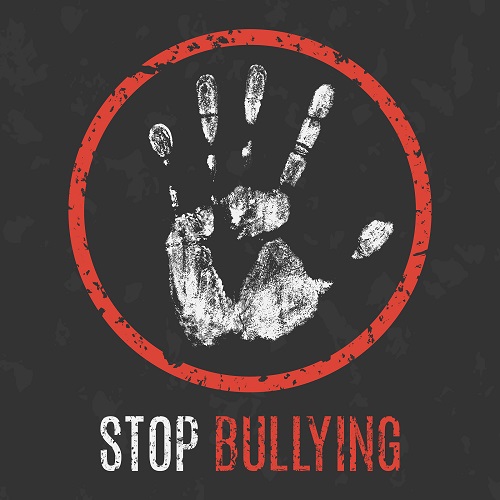
DEDICATION
We dedicate this guide to all principals, parents, and school personnel who believe that culture of a school makes all the difference in combating bullying behaviors. We want to empower our teachers, parents, and school personnel with tools, strategies, and ideas that will make a difference in the lives of so many students who have been subject to bully behaviors. If we do not stand up for our self and those that cannot, who will?
As a teacher and principal, we wish we had more tools and strategies that the whole school could implement. These collected ideas, strategies, and procedures have all been implemented at either the elementary, middle, or high school level. Most of these ideas are geared towards the elementary level, but can be adapted to reach students at any grade.
We also dedicate this guide to the students who are afflicted, and the tools to empower themselves to stop the bullying behaviors or get support in doing so! So many students do not have a trusted adult whom they can go to for this support. The pain they may be going through can seem unbearable. We need more school staff, parents, and community members stepping up to the plate to stop, teach, and build our students who are being bullied. We want the violence to stop, and make sure students are empowered, kind, and have courage!
As both Amy and Jon were bullied at one time in school, we write this guide to support all students who may be feeling the same pain. Sticks stones hurt, but words seem to last forever! Unfortunately, Jon has been on both sides as he bullied some students with his peers. He has contacted former peers and apologized profusely as he became an educator. Some were gracious and accepted his apology, while others would not communicate. Jon understands he cannot go back and undo the acts of his peers and himself, but it is his hope that through this guide others will have the tools and strategies to combat bullying behaviors.
Lastly, we admit we are not "experts" at stopping bullying, but we definitely have worked with hundreds of students in our two schools….42 years of combined educational experience.
ACKNOWLEDGEMENTS
The ultimate idea for this guide came from www.Teacher.org, Head of Outreach, Bryce Hall. The conversations between Jon and Bryce about the recent school shootings in February of 2017 led to the idea of the ultimate guide for principals that can be added to over time. Bully behaviors transform over the years…look at the plethora of change with the advent of social media and the Internet.
In addition, much of this writing is based on Jon Konen's blogs spots series on Bully Prevention. The added perspective from Amy Konen, a behavioral support specialist and English major, make this guide readable for principals, school personnel, parents, and community members.
This guide is incomplete, as it will always need new chapters, strategies, practices, understandings, and ideas to empower principals, students, and staff.
CONCLUSION

As educators, parents, and community members, we have a job to do. We must have conversations and open dialogue with our children. This is where it starts!
Unfortunately, by not addressing bullying behaviors tragic events can occur that can change a student, school, and community forever. How are we going to team together to make sure these events are not repeated? What role will each stakeholder play in stopping these behaviors? What role will the adults play in educating our students?
We purposely ended on positives and celebrations with our kindness campaign. We must be proactive in what we do…and we cannot waste time in the implementation of new practices and understandings.
We feel the ideas presented in this guide can be molded, adapted, and modified for any school at any grade level. Use this guide as a checklist to celebrate what you are already doing in your school. Use this guide as an idea generator to springboard new and more effective practices and understandings in your school.
We would like to hear from you! We would like to build a database of effective practices and understandings about bullying. The 151+ listed are just a start…what can you add?
A great site dedicated to anonymous reporting of bullied individuals affected at school is www.BullyWatch.org. Don't stand by and watch bullying occur. If you know someone who is being bullied; report immediately.
RELATED AREAS OF INTEREST
- Should I Become a Teacher?
- How to Become a Teacher
- Online Teaching Degrees
- Teaching Careers
- Teacher Resources
MEET THE EXPERTS
 Jon Konen
Jon Konen
Jon is in his nineteenth year of education and tenth year as a principal. He has been at his current school for seven years, which is an award-winning Blue Ribbon school in Great Falls, Montana. He has previously taught several grades in the elementary and middle school settings. He was also an instructional coach. Prior to his current position, he was a K-12 principal in a small rural school district in Power, Montana. Jon earned a Master's Degree in K-12 Educational Leadership from the University of Phoenix in 2004. He furthered his work garnering his Superintendent Endorsement from the University of Montana in 2016. In 2011, Jon was the recipient of the Presidential Awards for Excellence in Mathematics and Science Teaching (PAEMST) for his work in elementary science. Jon is married to Amy Konen and they have two boys.
 Amy Konen
Amy Konen
Amy is a Nationally Board Certified elementary teacher. As a 23-year veteran teacher in public schools, Amy has taught grades 1-5, literacy, and most recently, worked as a behavior support specialist and coach. She will return to the fifth grade classroom in 2017. She also continues her mentoring work for future National Board certification candidates throughout the state of Montana. Amy earned her Master's degree in reading and literacy and in 2000, was the recipient of the Presidential Awards for Excellence in Mathematics and Science Teaching (PAEMST) for her work in elementary math. In 2014, BNSF (Burlington Northern Santa Fe) selected Amy as the Teacher of the Year for Great Falls, Montana. She started the first and only Sensory Room in Great Falls Public Schools to provide behavior and socio-emotional support for all students in her elementary school. Amy believes in the power of relationships to inspire students to grow, learn, have courage, and be kind. Amy is married to Jon and has two boys.
Works Cited - Educator's Guide to Combat Bullying & Bully Prevention




